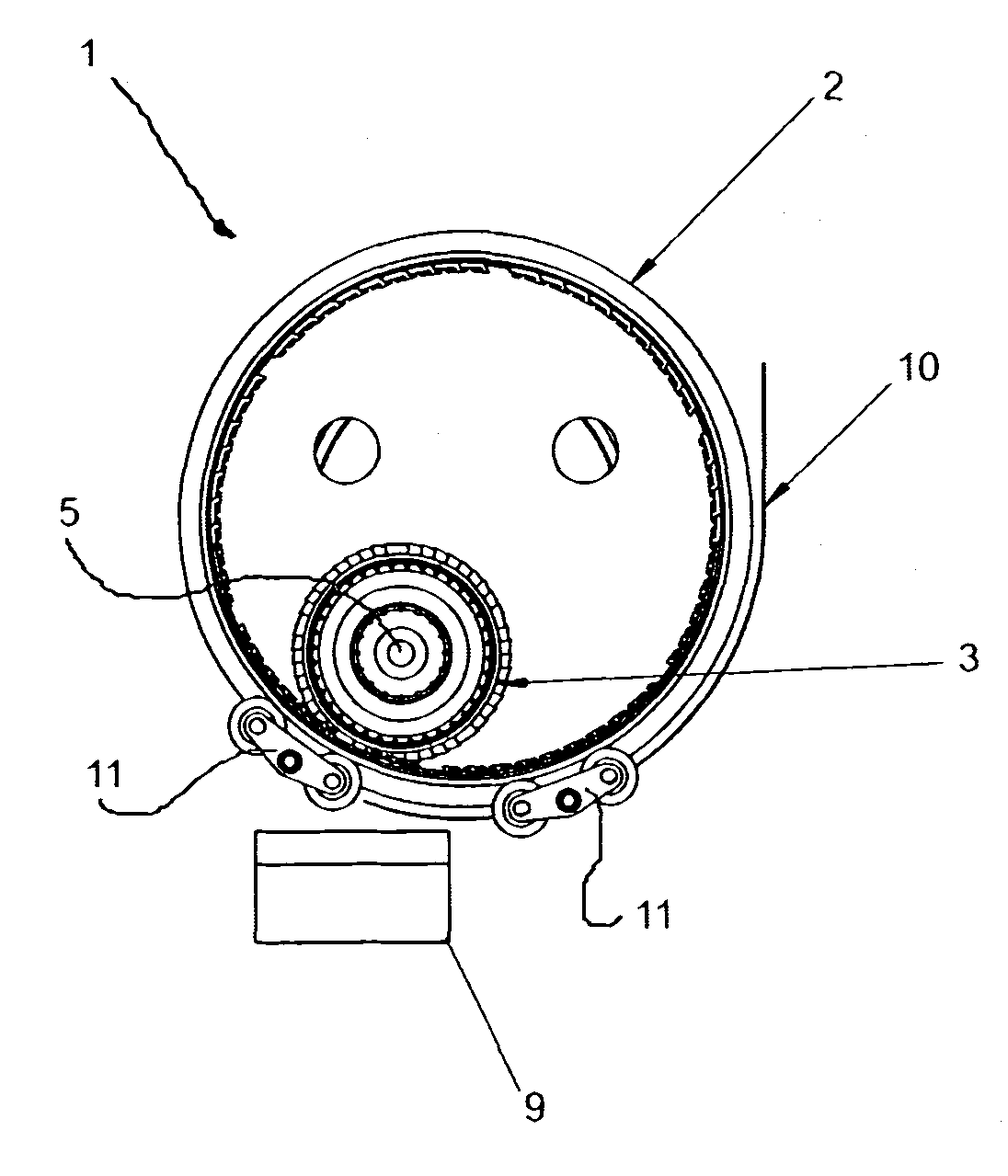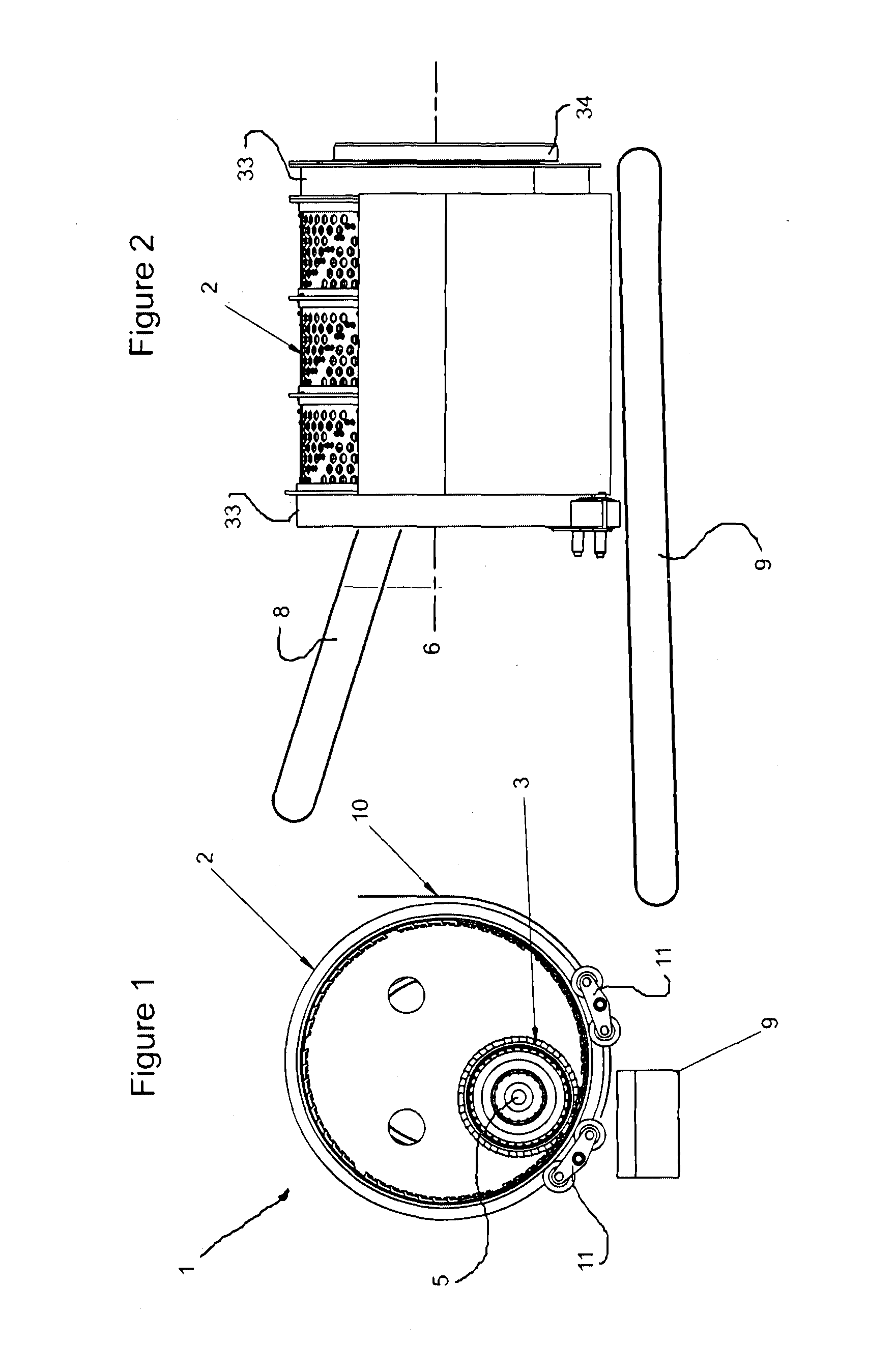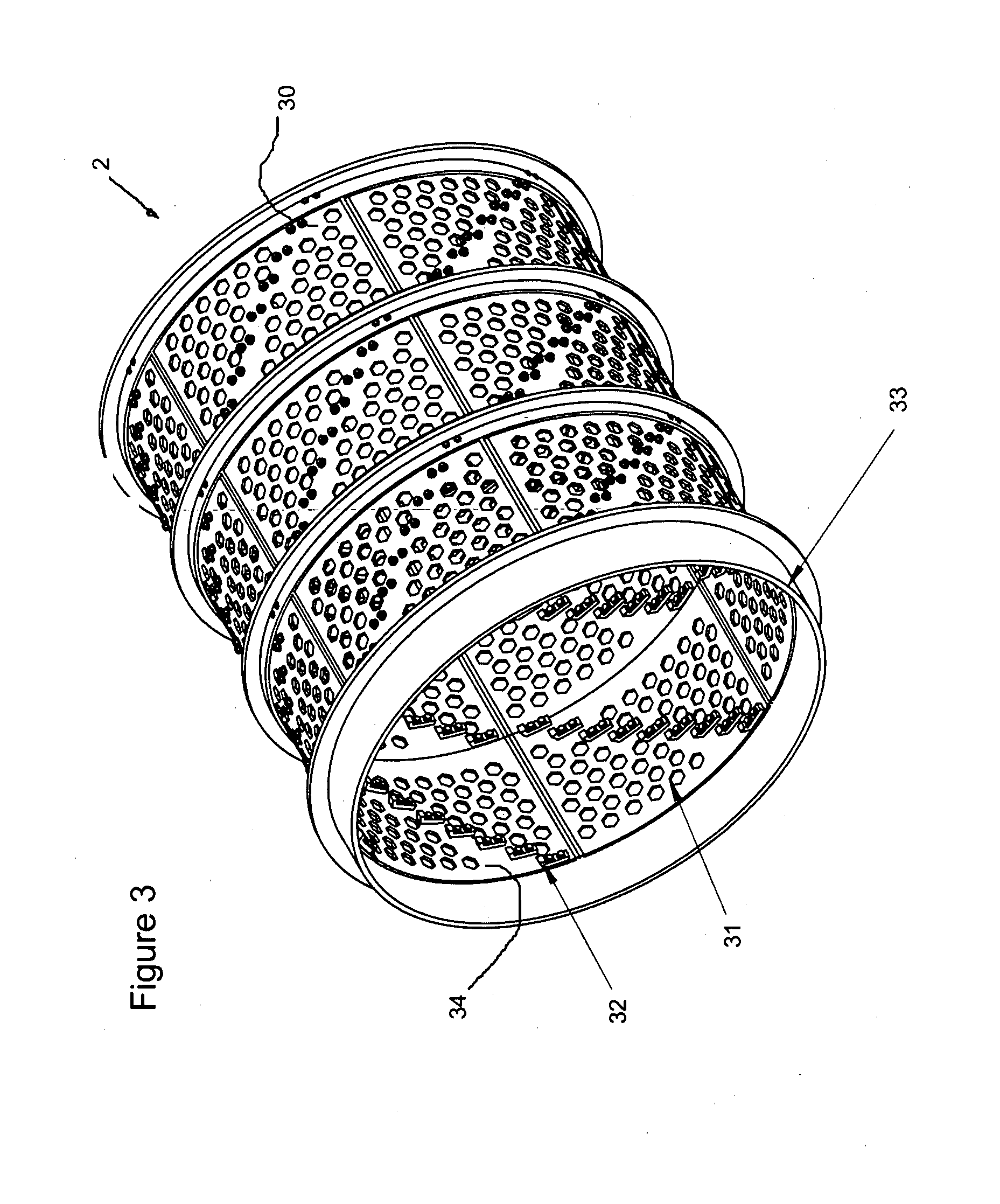The comminution of waste & other materials
a technology of waste and other materials, applied in the field of solid waste comminution and screening, can solve the problems of reducing the operating efficiency of the machine, clogging the screening aperture, and reducing the service life of the machine, and achieves the effect of strong shearing effect, high instantaneous load and increased shearing
- Summary
- Abstract
- Description
- Claims
- Application Information
AI Technical Summary
Benefits of technology
Problems solved by technology
Method used
Image
Examples
Embodiment Construction
[0100]FIG. 1 illustrates comminution apparatus (generally indicated by arrow 1) comprising an outer comminution drum (2) and inner comminution drum (3). They are typically manufactured of metal, typically a suitable steel. Stainless steels may be used where appropriate.
[0101]The outer comminution drum (2) is substantially cylindrical in configuration and has a hollow portion (4) in which the inner comminution drum (3) is located.
[0102]The outer comminution drum (2) has a central longitudinal axis (6) which is also its rotational axis. The inner comminution drum (3) also has a central longitudinal axis (5) which is also its rotational axis.
[0103]Drive means (not shown for clarity) comprising either or both hydraulic or electric motors power the rotation of the inner (3) and outer (2) comminution drums substantially independently of each other (i.e. the rotational speed of one or either can be altered without affecting the rotational speed of the other). Both drums rotate clockwise in...
PUM
 Login to View More
Login to View More Abstract
Description
Claims
Application Information
 Login to View More
Login to View More - R&D
- Intellectual Property
- Life Sciences
- Materials
- Tech Scout
- Unparalleled Data Quality
- Higher Quality Content
- 60% Fewer Hallucinations
Browse by: Latest US Patents, China's latest patents, Technical Efficacy Thesaurus, Application Domain, Technology Topic, Popular Technical Reports.
© 2025 PatSnap. All rights reserved.Legal|Privacy policy|Modern Slavery Act Transparency Statement|Sitemap|About US| Contact US: help@patsnap.com



